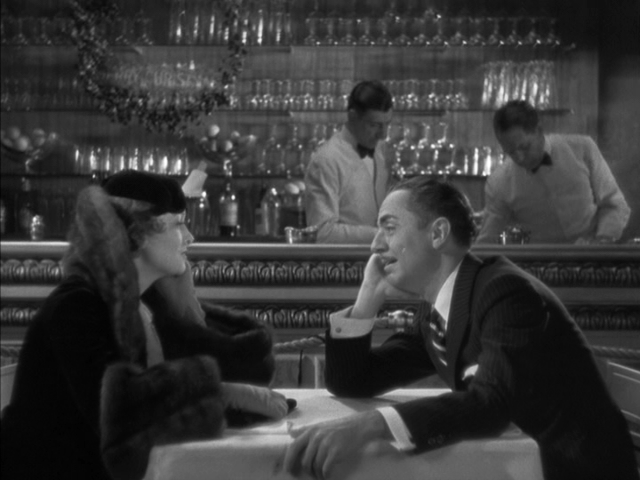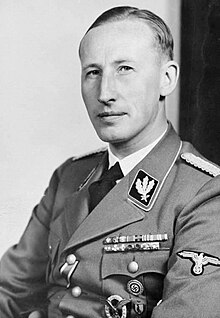
It’s not been published in a medical journal as far as I know, but I have been given to understand that one way of predicting whether one has a potential for addiction is by the Oreo test. You are safe enough if you can stop after eating one. This is one test I am sorry to say I have failed gloriously many times. Call me an Oreo addict. It doesn’t matter if they are the classic, the double stuff, the berry flavored or even the football shaped; they are welcome on my plate. I am confident that I am one of many, because the Oreo is celebrating its 100th birthday this year.
One other thing that I am addicted to is the murder mystery. Stories told about exotic locations, intrepid protagonists, are all tasty to me, but I do still appreciate home-grown classics as well. These days, I read a great many series and of these, there are a few that once begun trigger my addictive personality and I can't stop until I have finished them all.
Two that I will discuss are like the fine, chocolatey, crispy, but firm Oreo cookie outsides and one that I consider the sweet creamy center. When I first read
The Cold Dish by Craig Johnson I was hooked by the first bite:
 "There's nothing like a dead body to make you feel, well, removed. I guess the big city boys, cataloguing forty or fifty homicides a year get used to it but I never have. There is a religion worthy of this rite of passage, of taking that final step of being a vertical creature instead of a horizontal one. Yesterday you were just some nobody; today you're the honored dead with bread bags rubber banded over your hands. I secure what’s left of my dwindling confidence with the false confidence of the living, the deceitful wit of the eight-foot tall and bulletproof. Yea verily though I walk through the valley of the shadow of death I will live forever. If I don't, I sure won't become an unattended dead in the state of Wyoming with sheep sh*t all over me."
"There's nothing like a dead body to make you feel, well, removed. I guess the big city boys, cataloguing forty or fifty homicides a year get used to it but I never have. There is a religion worthy of this rite of passage, of taking that final step of being a vertical creature instead of a horizontal one. Yesterday you were just some nobody; today you're the honored dead with bread bags rubber banded over your hands. I secure what’s left of my dwindling confidence with the false confidence of the living, the deceitful wit of the eight-foot tall and bulletproof. Yea verily though I walk through the valley of the shadow of death I will live forever. If I don't, I sure won't become an unattended dead in the state of Wyoming with sheep sh*t all over me."

Sheriff Walt Longmire has been on the job for many years, and when he is first called to the scene of the crime he is positive that he is on the way to the great sheepicide he has been long awaiting. Instead, he finds the body of a young man who had been killed with a single shot through the back. Weapons experts determine that the weapon was most likely a very special rifle known as a Sharps rifle.
The history of the dead young man––one Cody Pritchard who, as Longmire puts it, departed for the far country from which no traveler ever born returns––is that he was no angel. Among other things, three years prior to his murder he was involved in a brutal gang rape of a young Cheyenne maiden who was afflicted with fetal alcohol syndrome.

The history of the Sharps rifle is that it was designed by Christian Sharps and adopted by the military in 1874 because it could kill a horse stone dead at 600 yards. It was used at Harpers Ferry, and by the Indians as well, as a buffalo rifle. Sharps shooter = sharpshooter. It was the Sharps rifles that put the icing on the cake at Little Big Horn. There were few of these rifles around, and you needed to be a marksman to shoot this rifle cleanly. The list of people who owned one was short.
Within days, two of the other young men out of the three remaining involved in the rape case were found dead, killed by Sharps. Walt Longmire and his Deputy, Victoria Moretti, a Philadelphia transplant with a mouth worse than a sailor, are fighting the weather of the high plains of Wyoming, as well as fears that more deaths will happen before the killer is caught.
And that was a great and enticing beginning to the rest of the Craig Johnson series, which goes from strength to strength. There are now eight books in this award-winning series, the latest of which is
As the Crow Flies, due out in May.

Slightly darker, but oh, so satisfying, is Martin Limón's series revolving around the exploits of a military duo in South Korea. After their introduction in
Jade Lady Burning, I was anxious to read
Slicky Boys.
George Sueño and his partner, Ernie Bascom, are both grateful to the army. What for? For George it is because he has a real life, money coming in, and has a job to do. He and Ernie are CID investigators for the 8th United States Army in Seoul, South Korea. They wear suits and do important work, something George never thought he would do growing up in East Los Angeles. Ernie's Chicago youth also left much to be desired.
 |
| Itaewon |
After work, these two friends and partners spend their free time in Itaewon, a seedy part of town filled with bars and businesswomen. On this occasion, they do a favor for one of the girls they met and it results in the death of a British soldier. It turned out that he was a little shady, and as the CID investigators they need to find his murderer before they themselves are in hot water for perhaps leading him to his death.
Part of the investigation reveals connections to a widespread systematic thievery of the American enclaves. After the devastation of the Korean War 20 years before, people were desperate and starving. In the middle of these wastelands were American military settlements surrounded by barbed wire, and these were the only places with food, clothing and shelter. The people would barter with the GIs for the wealth they held, be it so small as a used bar of soap. Others were more aggressive, using thievery. "Slick boys" is what the GIs called them, and the South Koreans softened it to "slicky boys." Many were exactly that, boys of six to 10 years old. They would slip through the wire and take anything that could fit in their pockets.
 |
| 8th Army PX |
In George Sueño's time, they were very organized and he was going to find out just how much. What he found impressed him, because there was a certain honor to the way the losses to the American compounds were always kept just below what the US Government allotted for. No greed was permitted. In this way, they also hid from investigations.
As Sueño's investigation proceeds, he feels that he is becoming wrapped in the tentacles of a giant squid. There are more brutal murders and the partners find far-reaching fingers in the pie, such as the North Koreans, the South Korean police, the South Korean and the US Navies. The case is dragging them down to the depths of evil. On the surface, at least part of the problem is the loss of military secrets.
Sueño has to lower himself to abide by the dictates of common thieves, but this did not really bother him. He was from East LA and he had been fighting his way up from the bottom all his life. His strength in his relations with the South Koreans is that he is one of the few who bothered to learn the language, to learn about the culture and to understand the desperate circumstances that force people into certain ways of life.

Martin Limón takes us to a South Korea that is fascinating, exciting and complex. He uses a bit of the history of the people he writes about to make us appreciate an Asian culture that has suffered for the last centuries. The seventh and, so far, the last in this series is
Mr. Kill, published in 2011.
Some of us take off the outsides of the Oreo, lick them and put them aside for later. Then spend a sweet time with the creamy middle. My grandson is one of these. It is such fun to watch his ritual. My appreciation of this sugar jolt can be compared to the sensation I have when reading the Chris Grabenstein series that takes place on the Jersey shore where people go to escape.

In
Tilt–A-Whirl, we are introduced to appealing partners John Ceepak, an Iraq war veteran and his sidekick, young Danny Boyle, who narrates the story.
“Some guys have a code they live by, some guys don't.
John Ceepak? He has a code.
Me? No code. Not unless you count my zip code or something."
So says Danny Boyle, a Sea Haven 2.5. That is to say a part-time summer cop in a tourist town on the Jersey shore called Sea Haven. He is a hometown boy who likes the job because of the cop cap, which he believes attracts the babes.
Ceepak, on the other hand, just finished a 13-year stint with the army, where he was in the military police. Before the army, he studied criminology. Before that, he was an Eagle Scout. Before that, Boyle figures he was one helluva hall monitor in kindergarten. He is a cop 24/7. One thing they have in common is The Boss, Bruce Springsteen.
Every morning, they meet at 7:30 at the Pancake Palace to discuss the plans for the day. It begins as a girl runs down the boardwalk covered with blood. The murder victim found on the Tilt-A-Whirl ride is Reginald Hart, a wealthy real estate tycoon also known as Reginald Hartless because of the lowdown tactics he has used in the past to drive tenants out of buildings.

Ceepak's code is simple. He will not tell a lie, or steal, or cheat, or tolerate those who do. It is an honor code. It is something Danny Boyle is learning to live by as well. He is having to grow up this summer and it is about time. As the story unfolds, we learn a little about what makes John Ceepak the man he is, and the
Tilt-A-Whirl murder stretches his sense of honor to the limits.
Chris Grabenstein has a wonderful way with words. From the moment the story begins, you are on a wild, exhilarating ride, with the wind in your face, the tang of salt air mingling with the smell of popcorn and the sound of laughter in the background. Grabenstein paints distinct visuals that remain with you long after the book is finished. There is one description of a chase of a wild-haired man through a working car wash that made me laugh like a hyena. So many of his descriptions keep such a big smile on your face that this dead seriousness of the crime and the criminality of what goes on in Sea Haven and elsewhere is lightened a bit.

In this series, which is followed by
Mad Mouse––also the name of a ride at an amusement park––there is a lot of amusement. But there is plenty of seriousness as well, always lightened by Bruce Springsteen quotes chosen appropriately for the moment. At the end of
Tilt-A-Whirl, when John and Danny have to pick their spirits up, Danny is reminded of the song Springsteen wrote for the New York City firefighters after 9/11, the ones who went into the fire because they knew it was the right thing to do.
May your strength give us strength
May your faith give us faith
May your hope give us hope
May your love give us love

Danny decides to work on his code as well.
The seventh and latest of the group is
Fun House, due out in May. Meanwhile, I have to dip into my spring yellow-centered Oreos, because I am salivating already.

 My love of Canada dates back to one winter night when I was a kid growing up in Washington state, and my dad pointed out the northern lights. A country north of us, closer to that beautiful sky, had to be pretty darn wonderful, I thought.
My love of Canada dates back to one winter night when I was a kid growing up in Washington state, and my dad pointed out the northern lights. A country north of us, closer to that beautiful sky, had to be pretty darn wonderful, I thought.







































.jpg)




